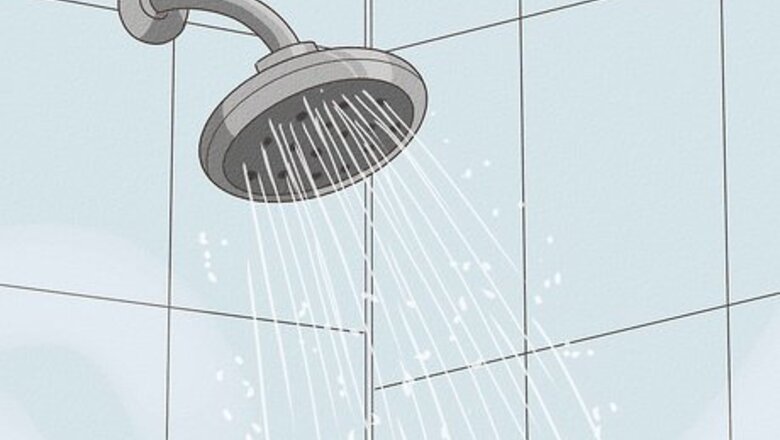
views
- To wash your eyes in the sink or shower, run a lukewarm, steady stream of water into your open eyeball for about 10 minutes.
- Or, fill a bowl with lukewarm water and submerge your face, opening and closing your eyes multiple times.
- Try an eyedropper filled with lukewarm water to gently flush debris or dust out of your eye.
In the Sink or Shower
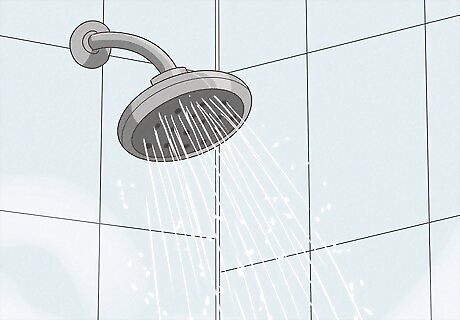
Run a gentle stream of clean water from the tap. You can either bend over the sink or get into the shower. Turn on the water and let it flow until it’s about lukewarm, using gentle pressure. Water that’s too hot or too cold could hurt your eye. Test the water with your hand first to make sure it’s right around room temp. Using water from the sink or shower is a great way to remove foreign objects from your eye. Not only is it simple and readily available, but the steady stream of water helps push objects out quickly. If you’re out and about, you can also rinse your eyes with a bottle of water. Simply hold the bottle slightly above your eyes and pour the water gently.
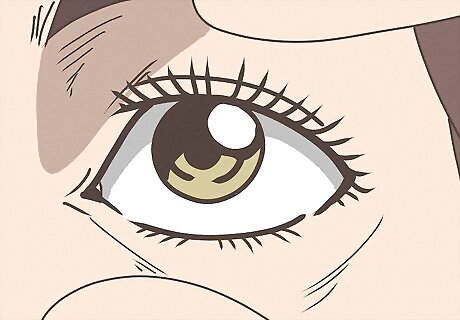
Hold your eye open with your hand. Gently grab directly above and below your eyeball, holding your eyelid open. Keep your hand in place the entire time to let water flow directly into your eye. If you wear contacts, take those out before you start.
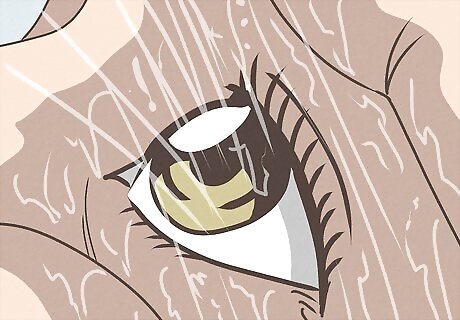
Let the water run into your eye for 10 to 20 minutes. If you’re in the sink, lean forward and let the tap flow over your eyeball and into the basin. In the shower, let the water run over your forehead and down into your eye. Keep your eye held open with your fingers for at least 10 minutes to wash away any irritants inside your eyeball. If you got a chemical in your eye, wash your eyes for at least 15 minutes. When you’re done washing your eyes, pat your face gently with a clean towel. If you can’t wash an object out of your eye and it’s still there after 24 hours, contact your doctor.
Eyewash with a Bowl
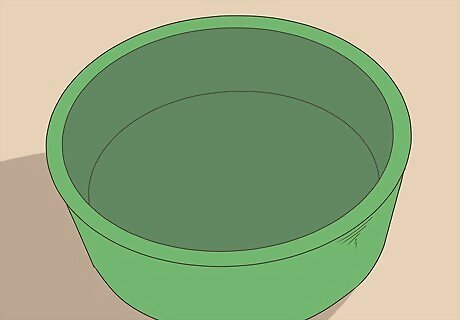
Set up a large bowl. Administering the eyewash from a bowl is the primary method for flushing eyes that have been exposed to a contaminant or that have a small foreign particle in them. It’s also ideal for everyday relief of tired eyes. The thoroughly cleaned bowl should be large enough for you to fit your face in it.
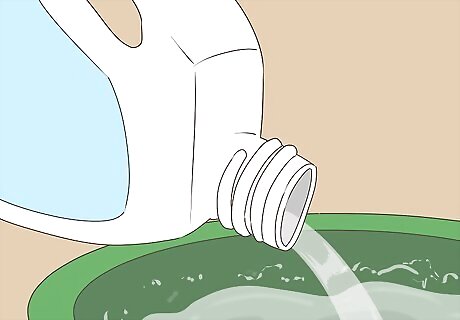
Fill the bowl with the eyewash solution. Whether you’re using an actual eyewash solution or simply water, make sure that the liquid is between 60–100°F (15.6–37.8°C).Fill the bowl with about 5 in (13 cm) of space left up top so no liquid spills out.
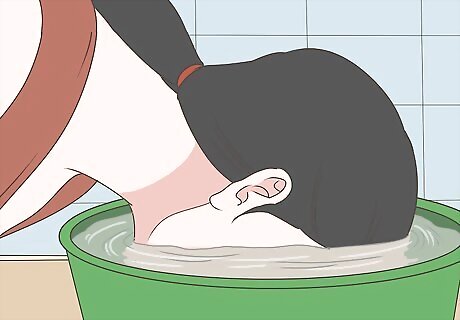
Submerge your face in the bowl. Take a deep breath and dip your entire face into the bowl so that the solution covers your eyes as well. Make sure not to tilt your head too far forward into the bowl or the solution will run up your nose.
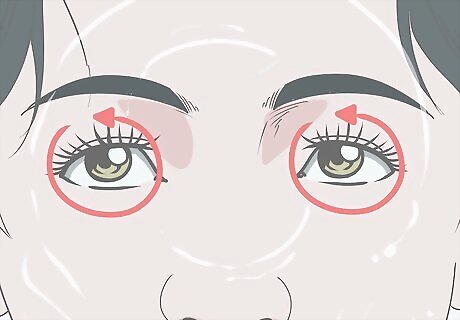
Open and rotate your eyes. Ensure the whole surface of the eye comes into contact with the water. Rotating your eyes in a circular pattern helps get the water in your eye, which will help remove the contaminant or particle.
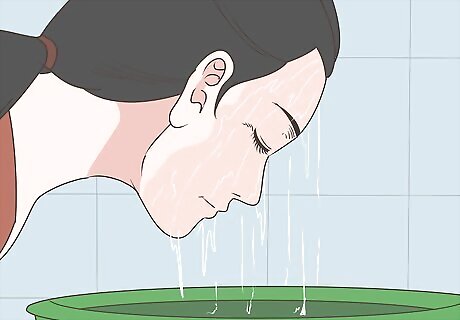
Lift your face from the bowl and blink. Remove your face from the solution. Blink a few times to make sure that the solution gets an even coating over your eyes.
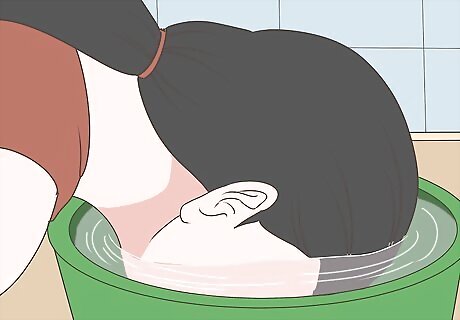
Repeat as needed. For dry, tired eyes, you can simply dunk your face once or twice until you feel relief in your eyes. In order to actually flush out a contaminant, keep dunking and rinsing your eyes for about 15 minutes. Again, you can't over-wash your eyes. If you've been exposed to an irritant, especially a chemical, it's okay to wash longer than the suggested amount of time.
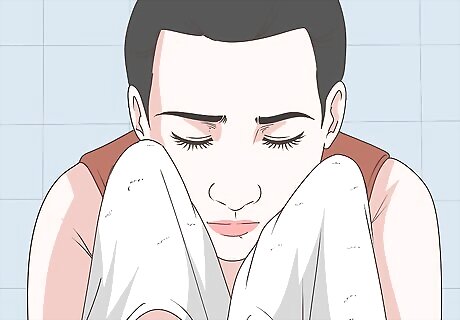
Use a clean towel to dry your face. Don’t wipe your eyes at all. Simply pat dry your closed eyelids with a clean, dry portion of the towel to avoid irritating your eyes anymore.
Eyewash with a Cup
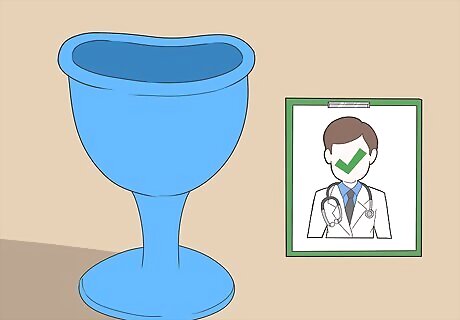
Use a cup if you have dry, tired eyes. This method is best for washing tired eyes. If your eye has been contaminated, then the ideal method is the previous bowl method. Consult an eye care professional before using this method for anything other than washing tired eyes.
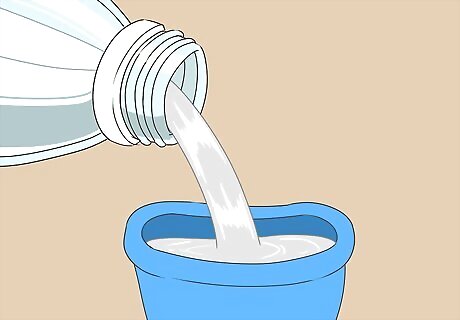
Fill a small, clean cup with an eyewash solution. Choose a cup that is roughly the diameter of your eye socket. A thoroughly cleaned shot glass works well. Or, use an eye cup specifically made for eyewash. Keep the commercial eyewash solution or sterile water between 60–100°F (15.6–37.8°C).
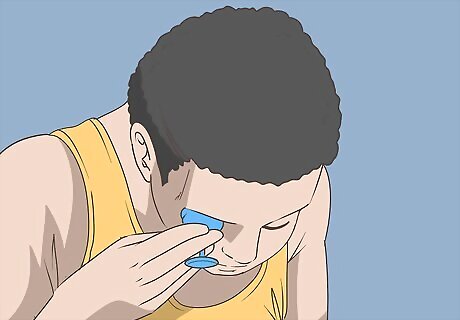
Position the cup snugly against your eye. Tilt your head down toward the cup. Place the rim of the cup snugly against your eye socket.
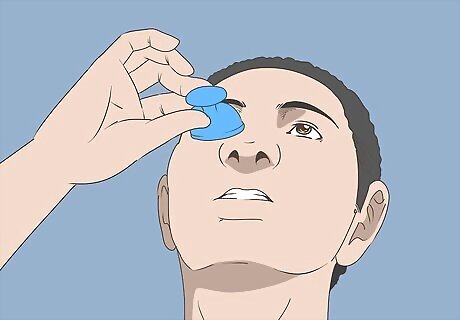
Tilt your head back. While still holding the cup against your eye socket, tilt your head back so that your eye and the bottom of the cup both face upward. This will bring the solution in direct contact with your eye. Be prepared for some small spills. Lean over a sink while you do this so that the solution doesn't run down your face and onto your clothes. If you're worried, wear a towel around your neck to keep yourself dry.
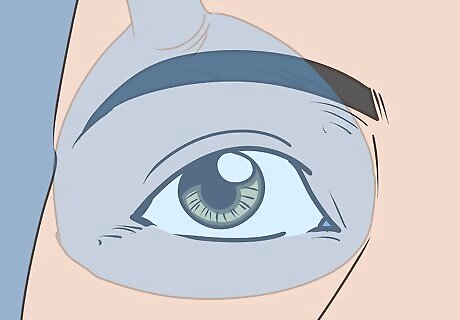
Look around and blink. By looking around in a circular pattern and blinking several times, you’ll help the solution cover much of your eye, which will help hydrate them or remove the contaminant.
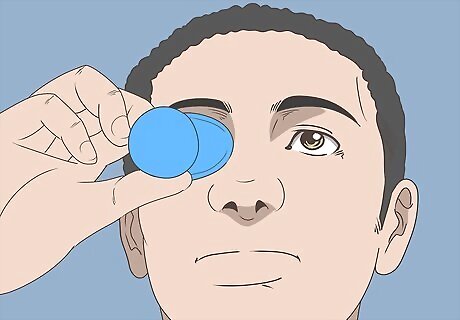
Repeat as necessary. You can then lower your head to remove the cup without spilling the solution all over yourself. One round of flushing might be enough for dry, tired eyes. However, you may need to repeat in order to finish flushing a contaminant from your eyes.
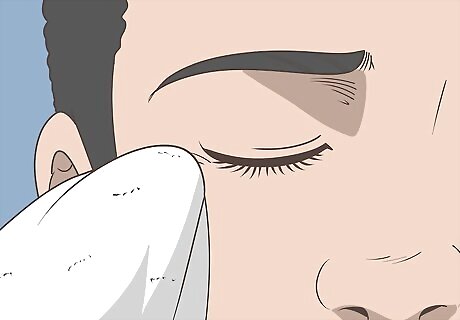
Use a clean towel to dry your face. Don’t wipe at your eyes at all. Simply pat dry your closed eyelids with a clean, dry portion of the towel.
Eyewash with an Eyedropper
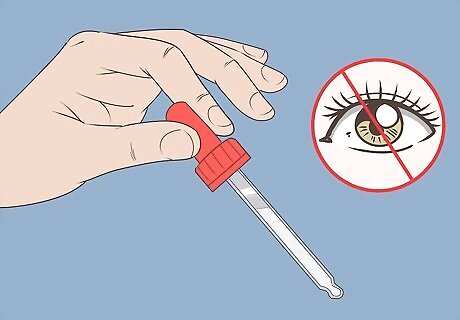
Use this method for children or to wash tired eyes. This method is best for washing tired eyes or for washing the eyes of small children who do not understand the other methods. If your eye has been contaminated, then the ideal method is the bowl method.
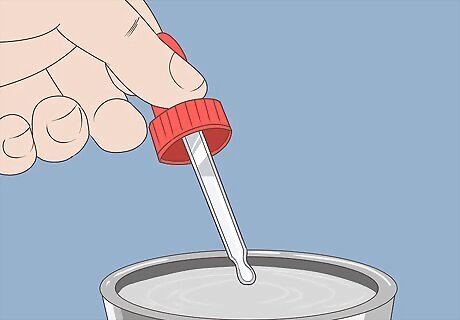
Fill a clean eyedropper with the eyewash solution. Submerge the tip of a clean eyedropper in your solution or water, then depress and release the dropper's bulb to draw water into the dropper. If you have a sterile plastic syringe, you can also carefully use one that does not have a sharp tip or needle.
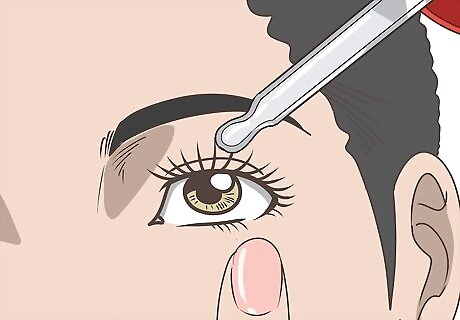
Squeeze a few drops of the solution into your eye. Tilt your head back, raise the dropper just above your open eye, and squeeze the bulb delicately to release a few drops of water. Ensure that you do not actually touch the dropper to your eyes or eyelashes, since it could spread germs.
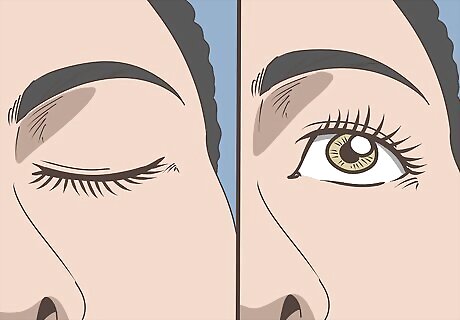
Blink several times. To get an even coating of the solution across your eye, blink several times. Try to blink the solution into your eye before it pools and run down your cheek instead.
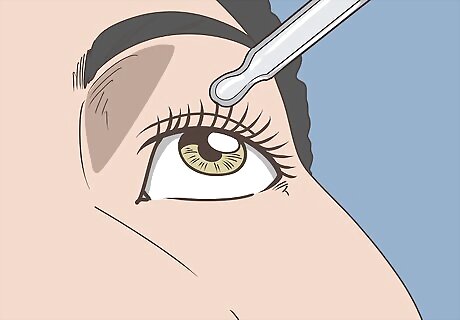
Repeat as necessary. You may only need a few drops in order to refresh dry, tired eyes. However, you will likely need to repeat the process numerous times in order to actually flush a contaminant out of your eye.
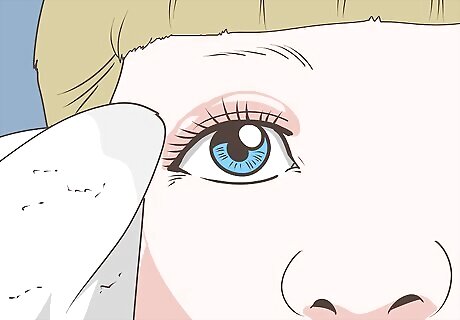
Dab the solution into your eye with a towel as a last resort. An alternative method for young children is to dip a clean cloth into the solution before gently dabbing in on the child’s closed eyelid. Even with light pressure, the dabbing will squeeze the solution onto the eyelid and lashes, which the child will then spread over the eyes by blinking. Repeat as needed, but do not double dip the same spot on the towel into the solution for sanitary purposes. Use a different dry section of the towel, or use a different towel entirely. If a towel doesn’t work, carefully use a clean cotton swab to wipe out the eyelid. Be careful, though, since this can cause some mild irritation during and afterwards.
Making Your Own Eyewash Solution
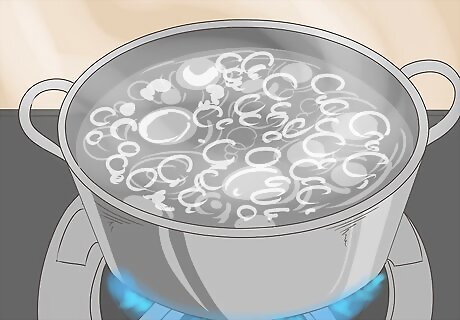
Boil a pot of water. Professional-grade, commercially available eye washes are always preferable to homemade remedies, but making a saline solution can work in a pinch. Bring the water to a full rolling boil for at least 1 minute and then cool before use. No matter how meticulous you are, there's always the risk of accidentally irritating the eyes or giving yourself a potentially severe infection. There are reported cases of people trying to make saline solution at home and getting acanthamoeba infections. If possible, it's better to use sterile, purified water rather than ordinary tap water. Tap water can contain more bacteria and additives than sterile water. If you don't want to make an eye wash solution, you can always use plain tap water. However, it may be more irritating and it carries a higher risk of containing bacteria.
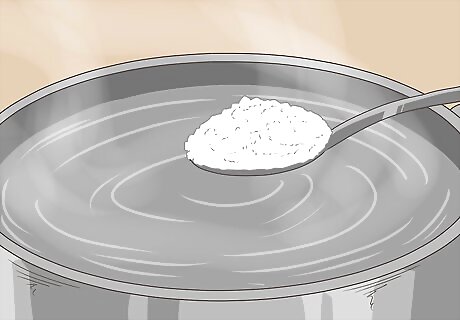
Add 1/2 tsp (2 g) of salt for every 1 c (240 mL) of water. Pour in the salt while the water is boiling. The closer your solution is to the natural salinity (salt concentration) of your tears, the lesser the shock to your eyes. Though the salinity of tears varies based on whether the tears are produced as the result of emotions (pain, sadness, etc.) or merely as a lubricant for the eye during normal use, tears are usually less than 1% salt by weight.
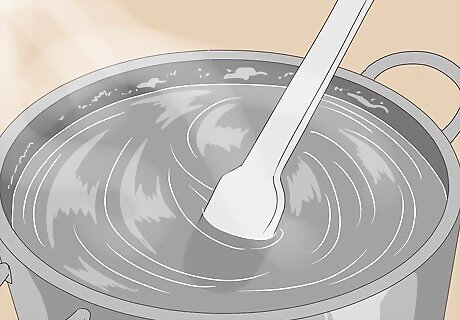
Stir the mixture to dissolve the salt. Ensure the salt that you add dissolves in the water. Since the water is boiling and you've added a relatively small amount of salt, it shouldn't take much stirring to dissolve it completely. Stir until you no longer see solid salt grains at the bottom of the pot.
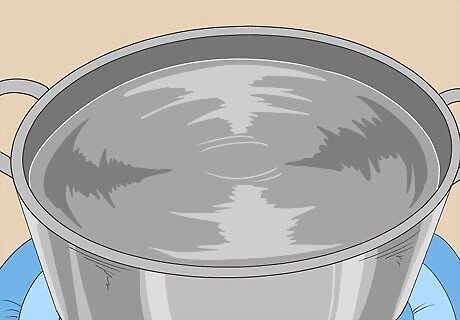
Allow the solution to cool. Never use an eyewash that's still hot. You can seriously injure or even blind yourself by burning your eyes with hot water. Remove your solution from heat and allow it to cool to room temperature. Either keep the solution in the pot, or transfer it to a new, clean container. Wait for the solution to reach room temperature. Cover the solution while it's cooling to make sure bacteria and germs don’t get in. Don’t cool the eyewash below 60°F (15.6°C). This can be painful, and could even potentially harm your eyes. Even if you keep your solution covered, be sure to throw it out after a day or two to avoid bacteria.
Flushing Your Eyes in an Emergency
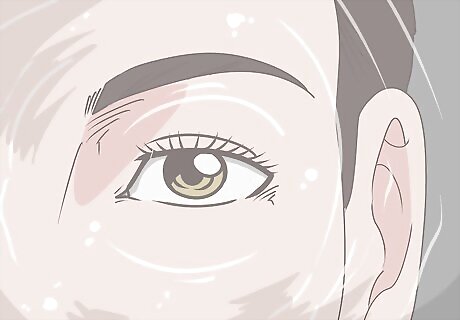
Wash your eyes immediately if you splashed them with chemcials. In some cases, like if you've introduced a serious irritant or contaminant to your eye, you shouldn't bother with sterile eye washes. Instead, your focus should be on immediately and thoroughly washing your eyes, then getting medical help. If you accidentally splash your eyes with a chemical that is an acid, an alkaline (base), a corrosive, or some other kind of irritant, immediately stop what you're doing and flush your eyes with water.
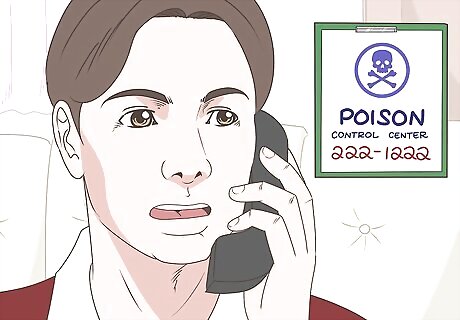
Call the Poison Control Center. Reach the Poison Control Center at (800) 222-1222 for advice. They will advise you either to wash your eyes or seek immediate medical attention based on the chemical contaminant. For instance, some chemicals—such as most of the alkali metals—react violently with water. The Poison Control Center can easily identify the correct steps for you to take. If they advise you to call 911 and also to rinse your eyes, have someone else around you call emergency services for you while you concentrate on rinsing your eyes. The quicker you can get to a hospital, the more likely you are to prevent serious injury or blindness.
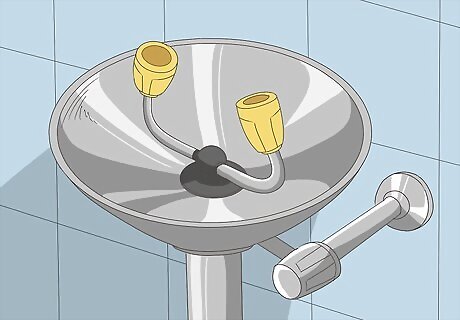
Use an eyewash station. Most places where you can conceivably splash dangerous chemicals in your eye will come equipped with special eye wash stations designed for just such a situation. Proceed immediately to the eyewash station, depress the lever (which should be brightly marked and easily accessed), and place your face in front of the water spouts, which will spray water at a low pressure. Keep your eyes as wide open as possible. Use your fingers to hold your eyes wide open.
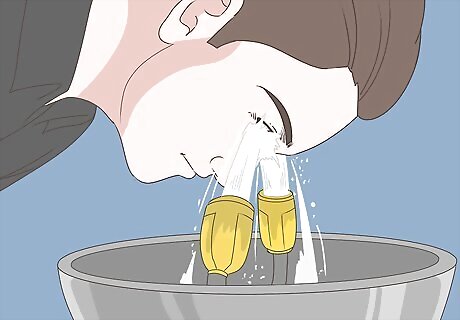
Wash your eyes for 15 minutes. Water doesn't neutralize many chemicals. It simply dilutes them and washes them away. For this reason, a large quantity is needed. Keep the volume of wash delivered above 1.5 liters/minute (0.4 gallons/minute) for 15 minutes.
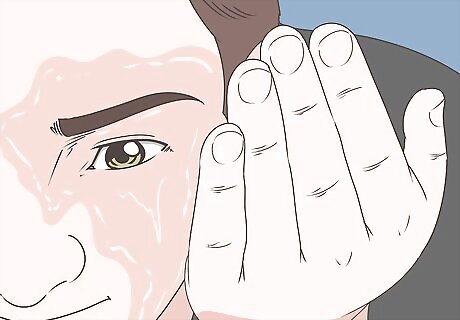
Use tap water If an eyewash station is unavailable. If you can't immediately find an eyewash station, proceed to the nearest sink as quickly as you can. Tap water isn't ideal for eye washing, as it's not as sterile as the purified water used in many laboratories, but it's far more important to rinse the chemicals from your eyes than it is to worry about possible infections. Splash water into your open eyes as generously as you can. Continue for at least 15–20 minutes. If your sink has an adjustable faucet, point it directly into your eye at a low pressure and a lukewarm temperature and hold your eyes open with your fingers.

Get medical attention as soon as possible. If the Poison Control Center has advised you to see a medical professional once you’ve done the immediate eye rinsing, then seek medical attention. Have someone else drive you to the hospital, especially if your vision is blurry.

















Comments
0 comment